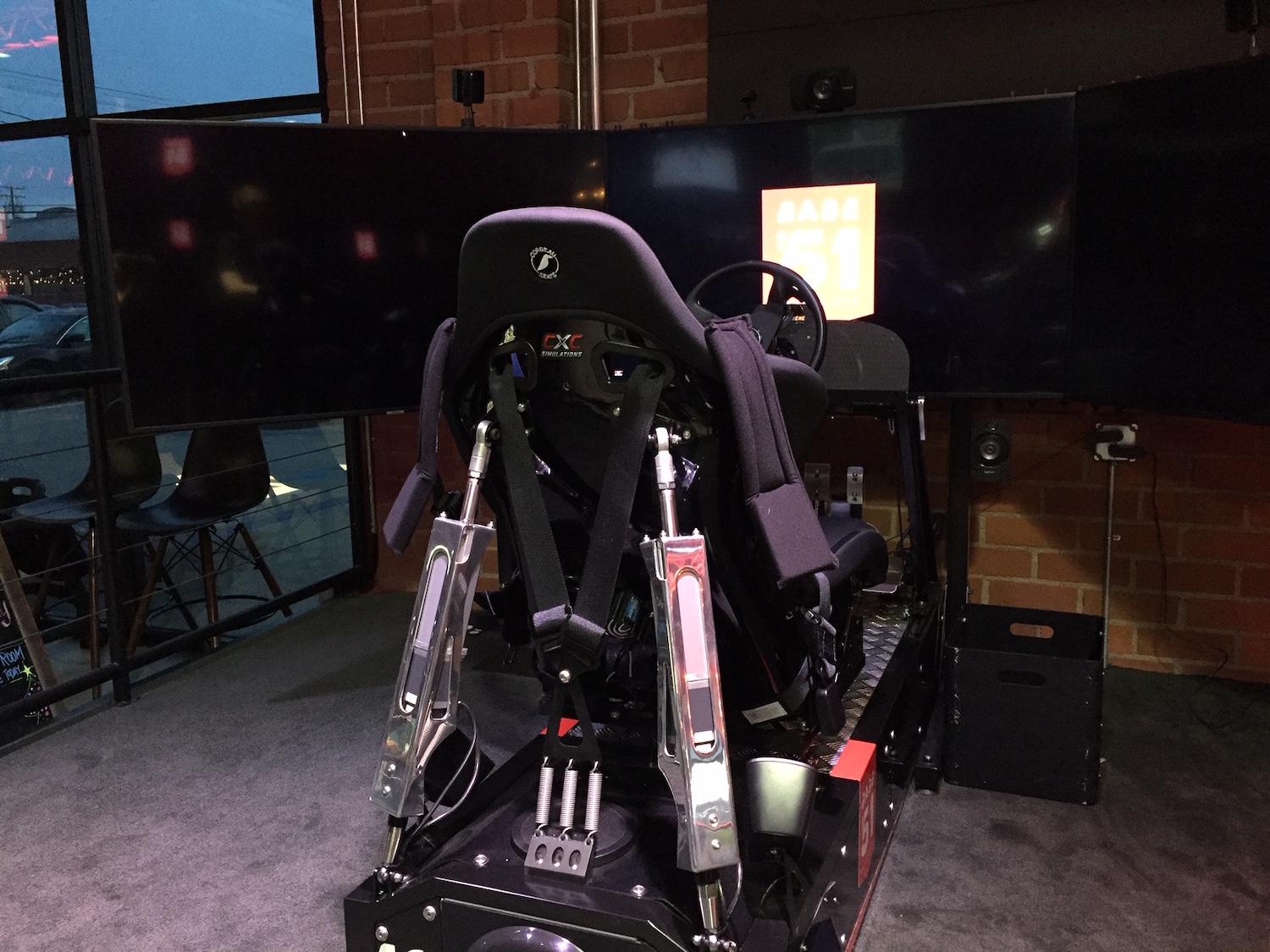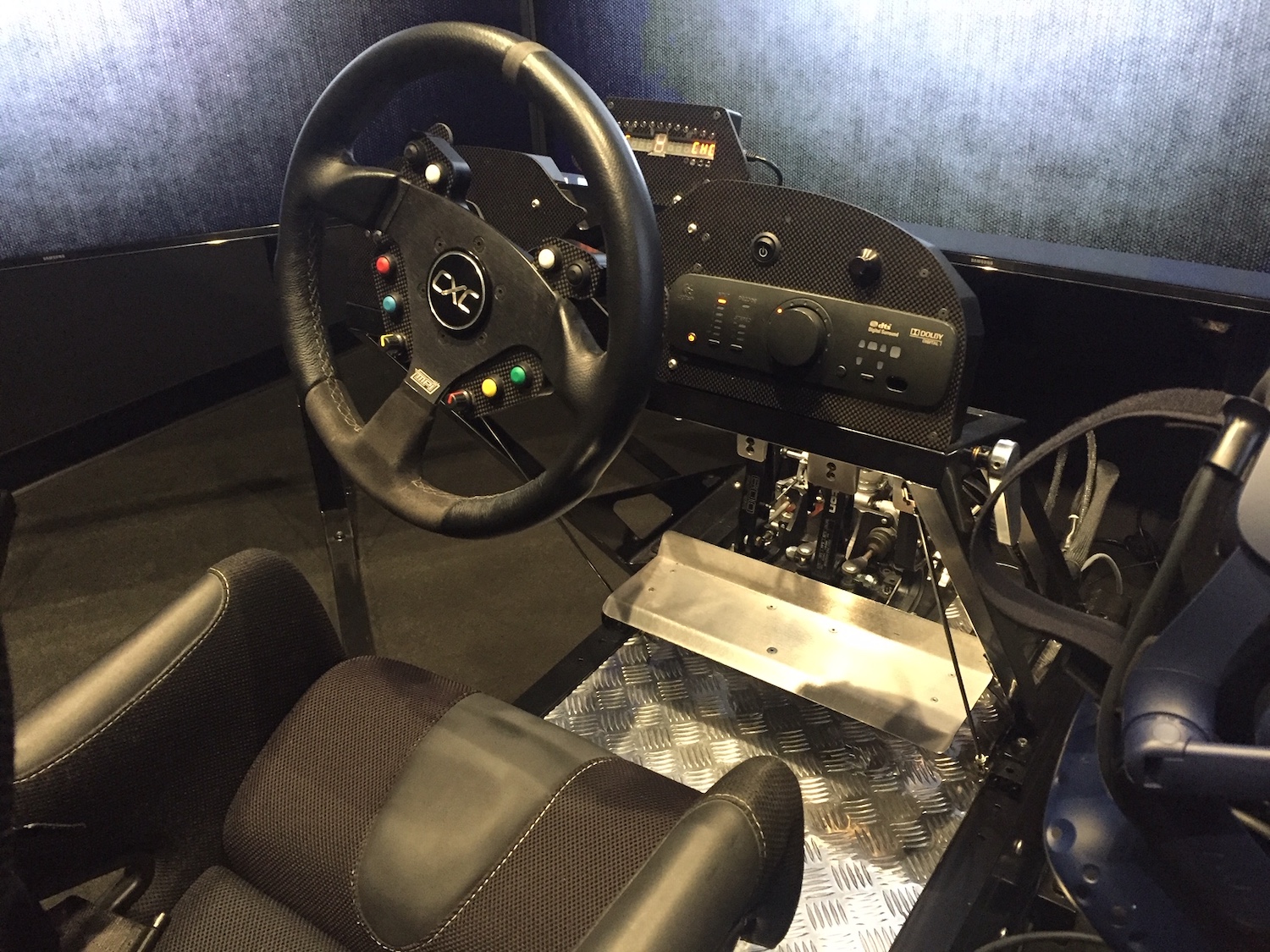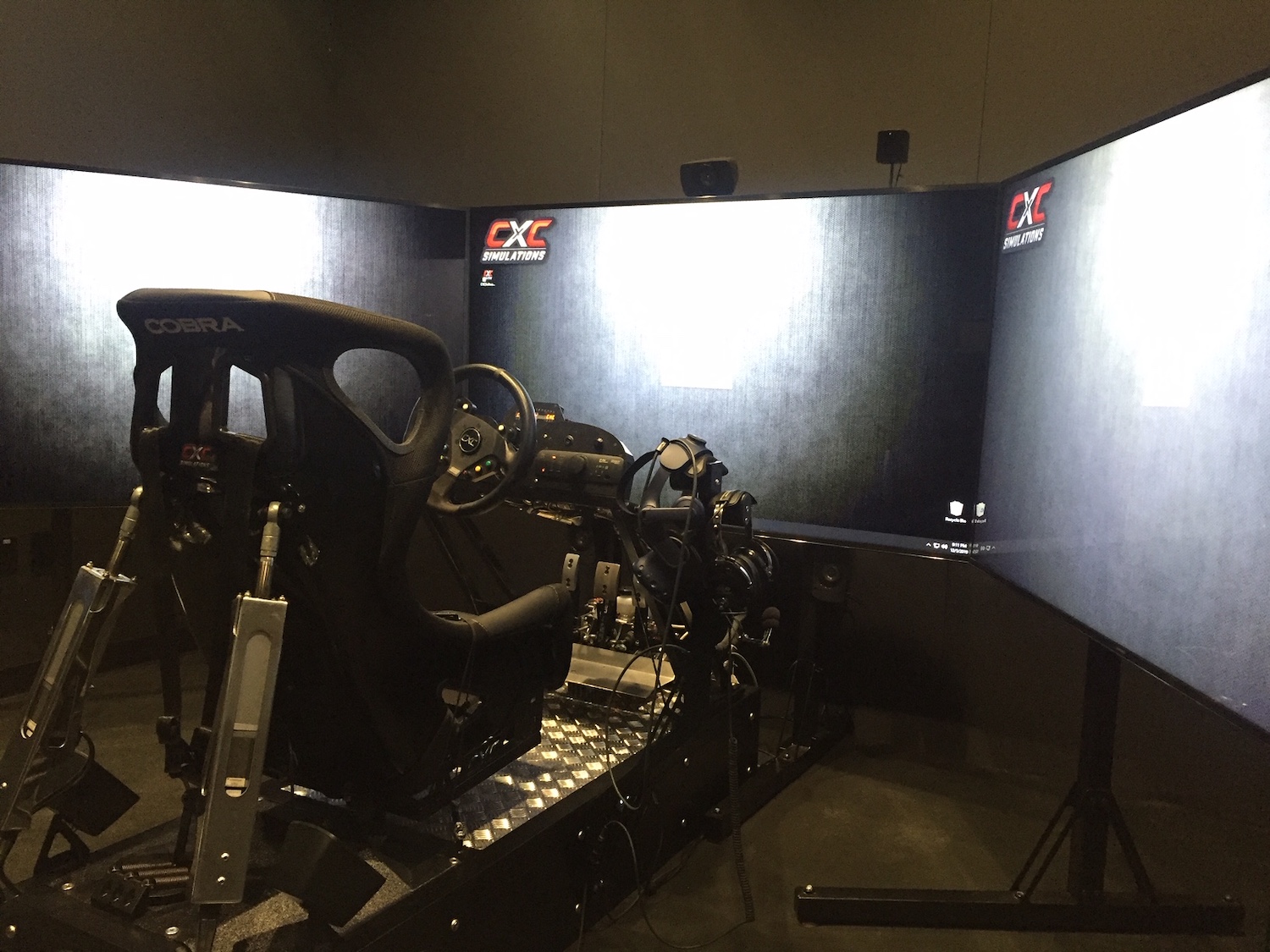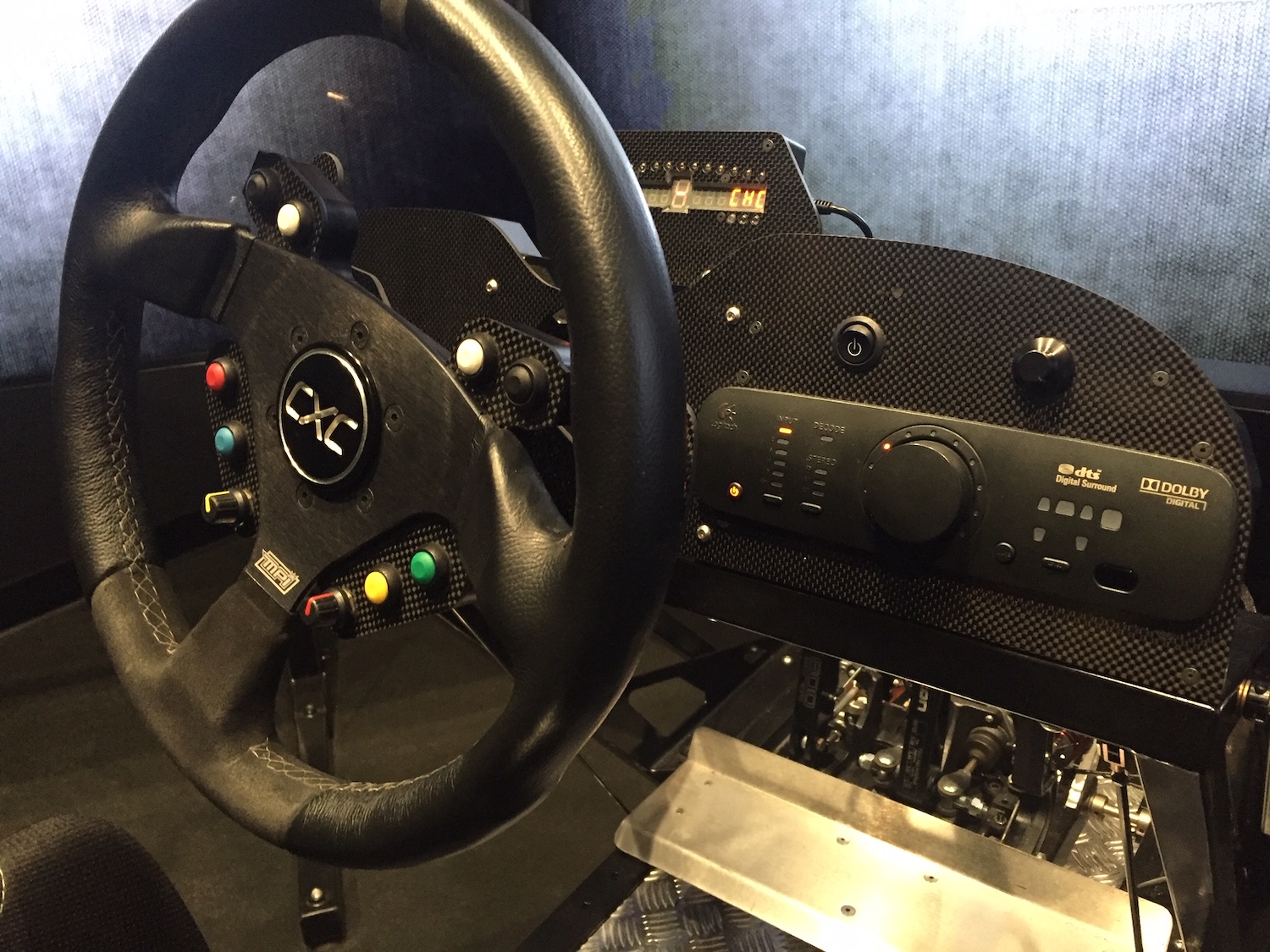Media | Articles
A Forza player tries the big rigs at the Base 51 simulation experience
“When I was a child, I played with childish things. When I grew up, I cast those aside.” One strong component of my childhood was video game racing. I started with a PlayStation, and almost immediately, I knew there was only one game I wanted to play: Gran Turismo, the iconic Sony franchise widely advertised as the first true driving simulator. I spent hundreds of hours getting racing licenses, and earning credits to buy better cars. It was an E-ticket to experiences I’d never have, and vehicles I’d never even see, as a child growing up in the American South.
Fast forward to today. Much has changed. I prefer the Xbox over the PlayStation, and my game of choice is Forza Motorsport. I’ve invested thousands of dollars into a gaming rig that features a real Sparco steering wheel and an aluminum racing seat. But I am no longer a child; I have a wife and a child of my own, with another on the way. I’ve driven more than 43k digital miles in the last decade, a pace that is unlikely to continue. I’ve started to think that it is time to put away “childish things”. Is this right? Do I need to? Is there still some value to be gained by spending time digitally when track time isn’t an option?
To find out, I stopped by Base 51 on a recent trip to Los Angeles. It’s billed as LA’s first premium sim experience venue, and I could think of no better place to get some time on newer style racing setups. Featuring 10 seats in the main area, one seat in the pro room, and an in-house bar and restaurant, the space did not disappoint. It’s built as much for events as it is for the guy off the street. Local companies such as Mattel and SpaceX have parties and team building experiences. Does that mean they aren’t serious about catering to someone with my semi-obsessive level of seat time? Not at all.
The rigs themselves are CXC Simulations products. With full brushless motor control and precise rods that move the entire rig up and down via a multiple-axis mount, simulating g-forces is just a single twenty dollar bill away for 15 minutes (though VR and Thurs-Sunday racing is slightly more expensive). That’s a lot less than many kart racing experiences.
Marketplace
Buy and sell classics with confidence

Track and car selection is pre-set by Base 51. It was explained to me that more options (or boring options) often slowed down the racing experience. I was able to drive a Mclaren 650 GT3 on the RedBull Ring GP. Want a custom car and track? You’ll have to pony up around $1200 for the pro room, which offers a wide variety of options. Ouch.
Whether you decide to use the main room or the pro room, Base 51 provides trained assistants to help instruct drivers who want to get the most out of their time blocks. The Assetto Corsa base software used also integrates a large amount of data that can be used post session to tell a driver exactly where they are losing time. It’s not unlike the graphs I’ve seen at actual race tracks.
This all sounded pretty good to me, so I bought a few sessions and took a seat, The vinyl wheeled Momo felt cheap, but the ball bearing direct drive was extremely smooth. Unlike my setup at home, there was no “cogging”, which is a rough sensation felt in the wheel when the feedback motor isn’t quite able to match the pressure put on it. Speaking of feedback—it could be better and more forceful, but I understand that they have all manner of clients in different physical shape.
The most amazing aspect of the Base 51 rig, though, was the pedal setup. The main room only features brake and gas pedal setups, while the pro room has a full clutch. However, given the car selection, it didn’t bother me. The metal pads on levers are connected to actual brake masters. Pushing fluid through lines to sensors feels the most realistic of any setup I’ve ever driven aside from being in a real car. Sadly, I’ve been in cars that have less pedal feel.


To make learning the track easy, my first session featured some basic assists such as a visible racing line, plus heavy ABS and traction control intrusion. This setup was pretty distracting and took almost ten of my 15 minutes to get used to. I mentioned this to the employee/instructor. With a few clicks, I was switched over to pro mode: no line and very little traction control. Wheel feedback improved dramatically and I was able to drop my lap times by almost eight seconds.
Around that time, one of my local friends arrived. What better way to test multi-car than to challenge him to a race? After a quick bite to eat, he agreed to run a session or two. Oddly, both sessions started out in the pits rather than on the race grid.
Because of that, we bunched up and did a lot of lead-follows to establish some sort of a pace while my friend was learning. He struggled, making many common mistakes such as pushing too hard into corners and spinning the rear tires coming onto straights. I kept my car under control and was able to improve on my previous lap time as well as beat his time by two seconds.
Could it be that my time racing at home as a hobby helped? Base51 employees thought so. My ability to learn and retain the track was apparently much better than that of the average customer.
The experience was a great deal of fun, but I couldn’t shake one thing: it still felt fake. No longer childish due to the expensive equipment, but far from real. One could blame the steering wheel feel or the tv monitor overlap. Perhaps it was the smell? You can’t simulate the smell of brakes and tires. I pointed this out to the manager. “That’s why we have the sim room. We can tailor temperature, sound, car, tracks, and other in-car features for clients.”
I don’t believe the pro room is for most people, but I find myself longing for the increased realism it offers. For 90 percent of the public, however, the 10 inexpensive and approachable rigs in the main room will be just fine despite the flaws. Maybe next trip I’ll stop by and use the pro room. Which raises a question: Is it still a childish thing if you have to pay big-boy money to play?




















